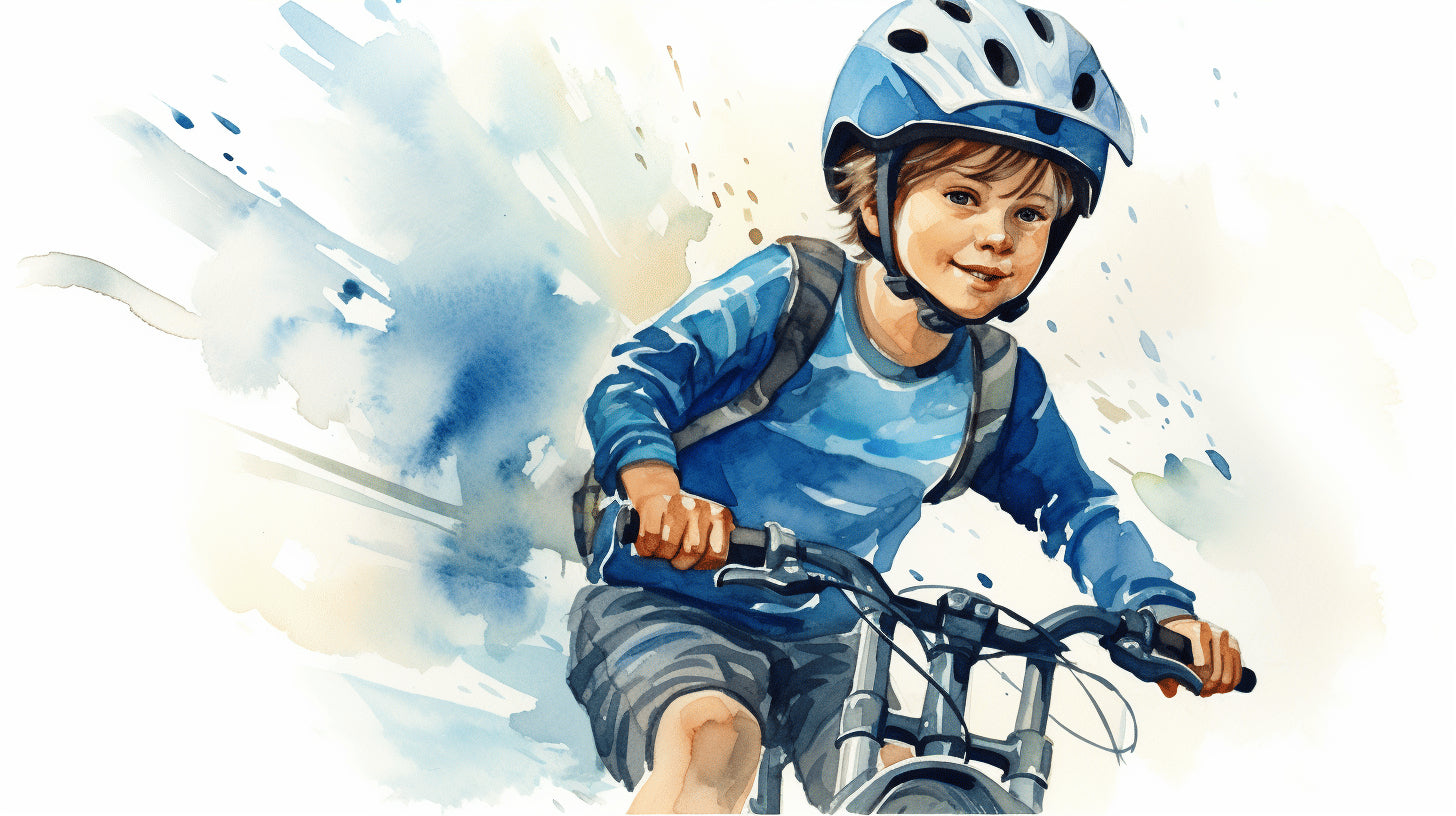Every pet parent knows how unsettling it is to see their furry best friend in distress. Much like humans, dogs can also grapple with anxiety, which manifests through various distressing behaviors. Statistical studies show that dog anxiety is increasingly becoming a pervasive issue. It's essential we make understanding and addressing this issue a priority to ensure the psychological well-being of our canine companions.
In this article, we'll take an informative journey, exploring dog anxiety, its heartrending realities, triggers, and the specific anxiety-related issues dogs can face, bringing you closer to understanding the potentially troubled psyche of your beloved pet. With the right knowledge, strategies, and approach, we can change our pets' lives for the better, one wagging tail at a time.
Increasing Prevalence of Dog Anxiety
Our furry friends are more like us than we often realize, especially when it comes to emotional wellbeing. Just as you or I might battle stress or anxiety, dogs experience these feelings as well. Lately, experts have noted an alarming increase in dog anxiety. But fret not, we've also made significant strides in understanding the root causes, symptoms, and effective solutions for dog anxiety.
Anxiety Caused by Other Cats or Dogs
It's surprising to know that a large chunk of dog anxiety is a result of interactions with other pets. An astonishing leap is observed, from 16.5% in 2020 to 43.52% in 2022, indicating that close to half of the dog population suffers from this social anxiety. This social strain could be due to uncontrolled aggressive behavior or unsocialized pets that instill fear and stress in our canine friends, leading to heightened anxiety levels.
It's crucial to understand that dogs are as subjective in their relationships as humans. They may not get along with all their fellow creatures, causing anxiety stemming from these imperfect relationships. A part of caring for our pets is acknowledging these social dynamics and understanding their triggers to lower unnecessary fear and stress.
Anxiety-like Behaviors
Another aspect that has gained attention is the widespread existence of anxiety-like behaviors in dogs. A staggering 72.5% of dogs exhibit these behaviors, as reported by their owners. These symptoms may include continuous pacing, excessive barking, destructive behavior, and irregular sleeping patterns. As responsible pet parents, recognizing these patterns and linking them to their underlying cause is the first step towards providing the help our furry friends need.
To address such issues, understanding dog anxiety and creating an environment that promotes ease and well-being for our pets is essential. Similarly, preventing pet encounters that could potentially cause stress and investing time in training and socializing our pets can go a long way towards curbing dog anxiety.
While these statistics might seem alarming, it's important to remember that effective solutions are readily available to help manage dog anxiety. For an in-depth understanding of such strategies, you may wish to visit our blog on Effective Solutions for Dog Anxiety and learn some practical steps you can implement immediately. Let's bring back the happiness in our dogs' lives because they indeed bring so much joy to ours!
Common Triggers of Dog Anxiety
Our beloved four-legged friends are known for their unwavering loyalty and boundless energy. However, just like humans, dogs can also experience anxiety. While it's heartbreaking to see our pets distressed, understanding what triggers their anxiety can empower us to help them effectively manage these difficult emotions. Here, we provide a deep dive into two common triggers of dog anxiety: loud noises and specific environmental factors associated with certain states.
Anxious Behavior Due to Loud Noises
Among the varying triggers of dog anxiety, a significant culprit is loud noise. A striking 57.41% of dogs display anxious behavior due to loud sounds - this is a notable increase of 77% since 2020. This amplified sensitivity to noise can commonly manifest during thunderstorms or firework displays. It's crucial to recognize if loud noises are causing distress for your dog. Be on alert for signs of anxiety, such as pacing, excessive panting, or hiding. Once identified, understanding how to mitigate the stress could significantly improve your pet's quality of life.
Our Techniques for Easing Dog Anxiety guide offers invaluable steps you can initiate immediately, like creating a secure, quiet space for your dog during loud events or trying calming pet-friendly music.
States with Higher Anxiety Ratings
Ironically, states that humans might consider peaceful and serene, like Vermont and New York, have a surprising observation linked to dog anxiety. Dogs domiciled in these states have displayed higher anxiety ratings than the national average. While the exact reasons behind increased anxiety levels in dogs in these states are currently unclear, researchers suspect it could be due to a combination of environmental factors and a more heightened awareness among pet owners regarding their dogs' behavior.
As dog owners, our role is to understand and address our pets' needs to give them the best possible life. Recognizing triggers of anxiety, like loud noises and environmental factors, is our first defense in protecting our pets from unnecessary discomfort. Along this journey, we're not alone. Numerous resources, comprehensive guides, and expert advice are available to help. By educating ourselves and seeking the correct support, we're taking powerful steps towards creating a more comfortable world for our furry friends.
Specific Anxiety-Related Issues in Dogs
When it comes to our canine companions, they are just as susceptible to anxiety as we are. Understanding the specifics of their particular triggers and fears can help us approach their discomfort with more empathy and patience. Here, we will focus on two typical anxiety-related problems in dogs: Noise Sensitivity and Fearfulness of Strangers.
Noise Sensitivity
A dog's hearing is far more acute than our own – they can hear higher frequency sounds and at four times the distance of humans. It's not hard to imagine, then, why noise sensitivity is such a common issue for dogs. This can manifest as acute fear and anxiety during storms or fireworks, but also the less noticeable anxiety over everyday sounds like household appliances or street noise.
- Identifying Noise Sensitivity: Dogs experiencing noise sensitivity may display various behaviors, from shaking or pacing to destructive behavior or attempting to escape. This is their way of coping with an overpowering and distressing sensory experience.
- Soothing Your Dog's Noise Sensitivity: Prevention is always better than treatment, and it's possible through gradual desensitization and positive reinforcement. Utilizing white noise machines or calming music for dogs can also be quite helpful in managing these situations.
Of course, every dog is different, and what works for one might not work for another. Always consult with a Vet or behaviorist to ensure you're providing the best care for your unique four-legged friend.
Fearfulness of Strangers
Humans instinctively fear the unfamiliar, and for dogs, this can mean people they've never met - strangers. Dogs that obsessively bark at or hide from strangers might be dealing with an underlying fear.
- Identifying Fear of Strangers: A dog displaying anxiety around strangers may tuck his tail, lower his body, or show other signs of submission. Aggression can also be a sign of fear – in this case, the dog may bark incessantly or show his teeth.
- Managing Fear of Strangers: Like noise sensitivity, gradual exposure is often suitable for helping dogs overcome fear of strangers. Proper introductions, positive reinforcement, and allowing the dog to approach at their own pace is pivotal.
These anxiety-related issues in dogs can be difficult for dog owners to navigate. But with empathy, patience, and the right strategies, any dog can live an anxiety-free life. Your furry friend depends on you for a peaceful life - help them achieve it by understanding and responding to their specific anxieties.
Frequently Asked Questions
-
What are some common signs of dog anxiety?
Common signs of dog anxiety include excessive barking, chewing or destructive behavior, panting, shaking, pacing, restlessness, aggression, and house-soiling.
-
What are the possible causes of dog anxiety?
Dog anxiety can be caused by various factors such as separation from the owner, loud noises (thunderstorms, fireworks), new environments or situations, traumatic experiences, medical conditions, or genetics.
-
Are there any natural remedies for dog anxiety?
Yes, there are natural remedies that can help with dog anxiety. These include CBD oil, aromatherapy, herbal supplements (such as chamomile or valerian), and pheromone diffusers.
-
Can training and socialization help alleviate dog anxiety?
Yes, proper training and socialization can be beneficial in reducing dog anxiety. Training can help dogs feel more secure and confident, while socialization exposes them to different environments, people, and other animals, reducing fear and anxiety.
-
When should I consider professional help for my dog's anxiety?
If your dog's anxiety is severe, persistent, or interferes with their quality of life, it is recommended to seek professional help from a veterinarian or a certified dog trainer/behaviorist who specializes in anxiety-related behaviors.




















Leave a comment
This site is protected by hCaptcha and the hCaptcha Privacy Policy and Terms of Service apply.